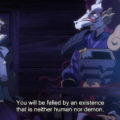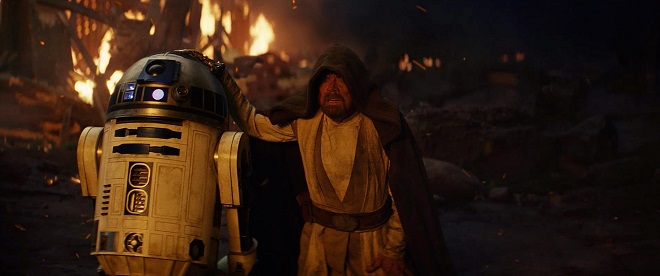Quarantine Control #126: Rise for the Infinity Train to Play Pachinko

The ledes for these posts are getting monotonous, it’s true. But here’s some good news that — sorry — is also something you’ve likely heard before, to start September off right. There are new boosters coming within days better equipped to deal with the Omicron variant and subvariants. This will be fine as long as… you know what, let’s not jinx anything. Let’s talk about the stuff we did in the last week before this paragraph wanders into cursed territory.
Geoffrey Barnes
Pachinko (2022)
Source: Apple TV Plus
Episodes: 8
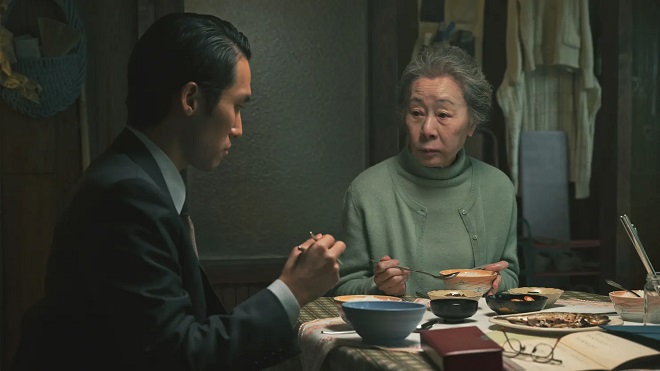
I’ve heard a lot about how good Korean dramas and movies have been in the last couple of years, those created in the country and others using the language while being produced and funded outside South Korea. Parasite from Bong Joon Ho and Minari from Lee Isaac Chung, a South Korean production and an American production largely told in Korean with subtitles, respectively, are the two most stated examples. There’s also, of course, Squid Game on Netflix. Pachinko has joined them, a series that covers the exploits of a family over the course of two generations that eventually dabbles in the pachinko industry, though that’s hardly the focus. It’s mainly a commentary about how Koreans struggled to fit into Japanese society, particularly in the early 20th century, but also more institutionally in the late 20th century.
Pachinko follows two central stories that take place between both aforementioned time periods, each with only a couple of characters in common. The early 20th century story primarily follows the early life of Kim Sunja (Yu-na as a child, Kim Min-ha as an adult), as she and members of her family, including her mother, struggle to make ends meet in a Korea dominated and ruled by harsh Japanese leaders. An older Sunja (Youn Yuh-jung — previously in Minari) is also a focus in the late 20th century story that primarily takes place in Japan throughout 1989, in a time where the country’s booming economy was just about to bust. A good deal of focus in the latter scenario is also on Solomon Baek (Jin Ha), the son of Sunja’s second son who tries to make it as a salaryman in real estate in Japan after returning from the United States.
The story of Pachinko frequently alternates between both the main timelines and generations it covers, often between scene transitions mere minutes apart. It alternates between three languages, with scenes in Korean, Japanese, and English, the frequency of which in that order. But the storytelling isn’t as complicated as that description might make it sound. As a story centering heavily around human drama and less so on the pachinko industry, it can move a little slowly at times, but credit should go to the storytellers and cinematographers for making the series easy to follow. It’s similarly easy to tell which period certain scenes occur in without the use of an on-screen text indicator after a bit of time, thanks to scenes quickly focusing on aesthetics common to those periods or on characters previously introduced in them — particularly young or old Sunja.
It’s also easy to determine which language is being spoken through the clever use of subtitle colors. That is, unless anyone chooses to watch it dubbed, which I don’t recommend. Dubbed content is a lot harder to tolerate in live-action compared to animated works, after all.
The series itself is a sight to behold. I mentioned how the cinematographers did a great job making the viewer know when each time period transition occurred in, but it’s worth acknowledging just how beautiful it is. Both time periods look authentic to the time in which they take place, despite how difficult this was to achieve — especially with a bunch of the Japan scenes being filmed in Canada. It sure doesn’t hurt that the actors themselves look beautiful too, sometimes to an almost ridiculous degree.
There’s a good chance the producers knew the show would get a second season, or wanted to abide by the novel’s progression regardless of what happened. It would explain the sheer number of unresolved plot threads by the series’ end. Neither of the two time periods receive a proper resolution. It was a hell of a bet on their part given the sheer cost of the season (a budget on par with other well-funded western dramas), but I can’t fault them for this when Apple obliged by announcing a second season.
Before I planned this little review, I was ready to harshly criticize Apple TV Plus for the subtitles on shows like this and Tehran being horrendously timed. As it turns out, this was only a problem when I watched it through the Xfinity cable box. It took until the finale for me to try it on the PlayStation 4 instead, on which the subtitles were perfectly timed. Whoops. Perhaps Apple can have a chat with Comcast about this.
Pachinko deserves all the praise it’s received from critics and those who viewed the series well before I did. Outside of a few overly melodramatic aspects and the season’s ending leaving viewers hanging, I couldn’t find much wrong in it. It’s a treat for anyone who’s fine with reading subtitles a good deal of the time.
Angela Moseley
I’ve returned after having a great time at Furrydelphia. I’m still in the waiting period to either see if I’ve picked up con crud (Covid edition) or if I’m in the clear. So far I’m feeling fine, other than exhaustion from working in hot weather a few days ago. As for the con itself, I’ll have a write-up via a Geek Babble column soon enough. For now let’s talk video games.
Monster Hunter Rise (2021)
Source: Nintendo Switch, PC
Episodes: One video game
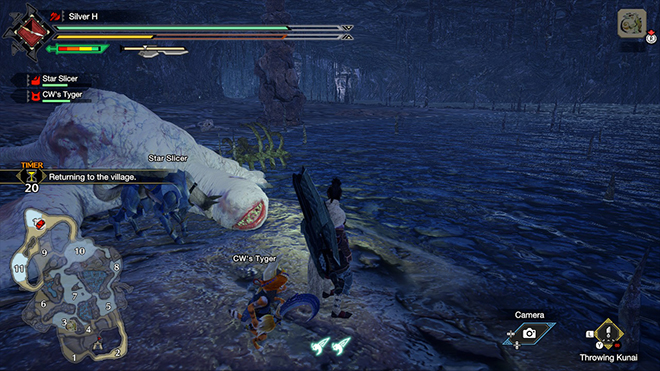
I’m ashamed to admit that a year after buying Monster Hunter Rise, and months after properly starting the game I haven’t made much progress. I’m no closer to getting to Sunbreak than I am when I streamed game on Twitch in late June. I’ve been playing the game off and on, but I’m still in Low Rank. Getting to the Master Rank content, aka the Sunbreak expansion seems like an impossible mountain to climb. Lately, it feels like I’m unable to Rise to the occasion. (Not sorry, heh.) In the meantime, it couldn’t hurt to discuss what I like and dislike about this game thus far.
The toughest part about getting into Monster Hunter Rise was coming directly off of Monster Hunter World: Iceborne. I had to give myself nearly a year-long break from any Monster Hunter in order to let some of my muscle memory atrophy. The control scheme of Rise is both similar and different enough to Iceborne to be frustrating. Nintendo is fond of swapping the confirm and cancel buttons when compared to other consoles. It’s fine if the Switch is your main or only console. It gets frustrating when switching between various consoles or even PC with a game controller. By the time I properly got into Rise, I had been gaming on my Switch for a while which helped. The transition to Rise wasn’t perfect, but it helped not having Iceborne fresh in my memory.
With the control scheme issues mostly out of the way, I noticed another problem. The single player and multiplayer are highly segregated compared to World and Iceborne. In World, all missions were the same and friends could simply join in as long as you all had PS+ or Xbox Live. The difficulty immediately scaled to four players the moment one to three others joined your game. This was later tweaked in Iceborne to scale the difficulty to just two players or slightly higher for three or more players. There is no automatic distinction like this in Rise. All quests done from the village handler are single player only. All quests done from the Gathering Hub handler are automatically scaled to multiplayer, although they can be tackled alone.
Additionally, local players (people in your friends list) can join you or strangers can join your quest. There is no option for in-game voice chat with friends. One would either have to use Nintendo’s awkward offerings aka, the Voice Chat app which requires a smartphone or tablet. Or they’d have to use Discord. (Granted, this probably isn’t an issue if you’re playing Rise on PC.) This makes it much harder to set up hunting parties with friends. The majority of my friends who played World and Iceborne with me refused to play Rise– mostly because of the controls. My husband plays Rise multiplayer with me, but the voice chat is an issue. He finds Discord too cumbersome to use, as multiple headsets would have to be implemented to hear each other. Our solution has been to either have one of us play in handheld mode while the other takes the TV or to set up the Games monitor next to the TV. I do have another friend who’s further along in Rise, but I’ve yet to coordinate with both him and my husband.
In short, multiplayer on the Switch especially local multiplayer is a bit of a mess. If absolutely NO one among my friends and family had picked up Rise, I probably would have played this game on PC. At the very least, playing with a different set of friends and possibly other streamers would have been an option. Voice chat using Discord would be a breeze.
For now I’ve decided to just finish off the single player section of Rise by myself. I have two major issues with single player. The monsters have such a ridiculously low pool of health that the fights are just too easy. For example, I went toe-to-toe with Magnamalo, Rise’s mascot monster and the current threat. Just as it felt like my fight was getting started with this giant cat he went down. Then the game’s credits rolled. Of course there’s still much to do, but I can’t believe how anti-climatic it all felt. The fight itself couldn’t have taken more than 15 minutes despite having an entire hour. I still have a ways to go before I finish the single player quests, but the challenge is just lacking. I could also blame my decision to use the Defender armor and weapons. With the introduction of Sunbreak, the Defender sets are designed to get new players through the base game faster so they can enjoy the expansion. The armor and weapons might be a little too good, or single player is just that easy.
My other major gripe with single player is that going through it does not increase your Hunter Rank at all. Despite single player quests being 5 stars for me at the moment, my hunter rank hasn’t risen past 2. It seems like the only way to increase said rank is to play multiplayer hunts, which again can be done solo. I’m guessing the only purpose of single player is to ease people into the game and the controls. I understand the reasoning, but I can’t help wonder if there’s anything beyond finishing single player or if it’s just a massive time sink. I do fully expect the game to ramp up in difficulty once I finish this mode.
Complaints aside, I’m still immensely enjoying my time in the game when I do play. Palamutes are one of the best additions to the game. I also like the sense of vertical scale the Wire Bugs brings. The monster riding is interesting, but I still prefer the Clutch Claw from Iceborne. I’ll have more thoughts for Quarantine Control when I’m further along in the game. If you’re a Monster Hunter fan, no doubt you’ve already made your way into Monster Hunter Rise: Sunbreak. Someday I’ll get there.
Joseph Daniels
So according to the pattern I’ve established in the Year of the Tiger, the start of the month is usually when I like to take a bit of a break from talking about what I’ve watched and highlighting tigers in media, and offer a few kind words to the readers.
I’m not feeling kind this week and it’s all HBO Max’s fault. I don’t even have a subscription to it, but I know that, through its association with the Canadian service Crave, they contain many shows that pop culture has latched onto like Game of Thrones, of which their sequel series has just debuted and is being advertised very heavily. The cynical part of me wonders if the showrunners are going to use House of the Dragon as a means to justify the way they wrote Daenerys in the last season of the previous show, but it’s too early to tell. They’re certainly using the show for something nefarious, but first I need to set the stage.
What inspired my focus this week was what everyone’s been calling the HBO Max Purge. Batgirl got infamous for being canceled after it was done and written off for the tax break, but a lot of shows have been pulled for unknown reasons. It’s insane to think that it’s possible to make more money by not showing off your finished product than to actually show it off to everyone, but we’re living in a world where corporate greed knows no limit and is willing to stoop to nothing so low that they can’t go even lower later.
HBO Max isn’t the first streaming service to do wrong by its creators. Remember when Netflix used to save shows from cancellation? The excellent Longmire got three extra seasons it wouldn’t have had if A&E had been allowed to get away with dropping it. Long after the network stopped seeing value in it, Netflix stepped in. These days, though, it’s Netflix that no longer sees value in something, and so shows like Tuca & Bertie got barely one season before Cartoon Network had to step in to save it. And pour one out for The Baby-Sitters Club, which likely won’t have the same kind of luck.
Incidentally, I don’t think we’re ever going to see any adaptation of The Baby-Sitters Club manage to last long enough to feature Abby Stevenson, a character who was written into the series to replace Dawn Schafer when the author decided to inject a dose of realism in the series and had Dawn move away permanently.
It feels like nothing short of a miracle that a creative idea like Centaurworld got a second season before the guillotine landed, and one wonders what might’ve happened if the show had come along a few years sooner, during the era of Bojack Horseman, when you could reasonably expect your show to last several seasons and get to end it on your own terms. At least The Umbrella Academy managed to last four seasons, assuming they’re allowed to actually make the fourth season and Netflix doesn’t reverse their decision like they’ve done for other shows in the past. And lest we forget, they changed their mind on developing projects like the previously announced Bone adaptation.
But this isn’t about Netflix, this is about HBO Max. Former home of shows like Infinity Train, which its own creator has suggested we might have to pirate because circulating the tapes is currently the only reliable way to actually see it. It’s still up on sites like iTunes, but who knows how long that will last? At this point, you’re probably expecting an HBO Max, John Oliver style “So that’s exactly what we did” moment where I reveal I pirated the show in order to watch it.
Infinity Train (2019)
Source: HBO Max Well, guess we’re fucking stealing this show now… they’re apparently not even manufacturing the DVDs anymore
Episodes: 40, + 10 bonus episodes legally released for free online
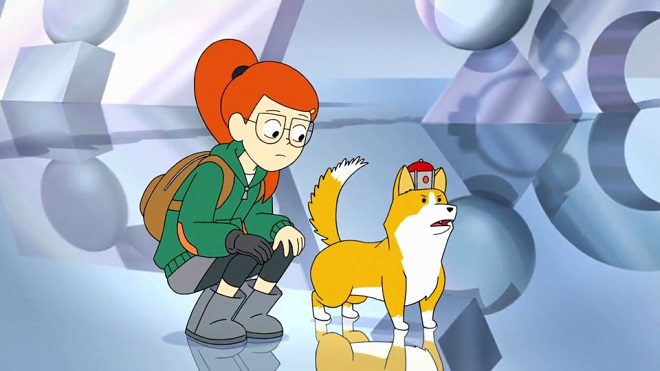
Suck it, HBO Max.
(By the way, Teletoon in Canada still has the bonus episodes on their YouTube channel, which were produced before the show moved over to HBO Max, and it’s possible they forgot about this upload. There are also unofficial uploads of these bonus episodes, but technically they still have a legal upload available, so not everything Infinity Train currently needs to be pirated.)
One of the reasons I’ve slept on this show until now was that I didn’t have it on any of the services I subscribed to here in Canada and I was waiting for it to show up on Crave because of their partnership with HBO Max, or maybe Netflix Canada or even somehow Disney+ if they performed some kind of licensing voodoo. Heaven knows Disney’s trying to own everything anyway. But now that no one’s allowed to pay HBO for the ability to watch this show and the creator himself has suggested it, all morality is going to go out the window, because let’s not mince words and call it something it’s not. Last week, I suggested that there weren’t any official sources for Juuni Senshi Bakuretsu Eto Ranger, meaning that the YouTube upload could be considered “unofficial”. But watching Infinity Train in September of 2022? We’re all stealing this show right now and it’s currently the easiest way Owen Dennis has of getting his work seen, and it’s all HBO Max’s fault. You brought this on yourself, HBO Max. You basically gave us permission when you refused to let us pay you for this content anymore.
Each season of Infinity Train can be considered its own story and features mainly different human characters alongside the recurring residents of the train. The first season stars Tulip Olsen, a girl struggling to deal with her parents’ divorce and their own seeming ineptitude at raising her. When a planned trip to a game development camp falls through, she runs away from home to try to make the 300 mile journey on foot. It would take me nearly a week to get there on foot, I don’t know what Tulip was expecting.
The series would fit right in among shows from the 1980s, from the basic look of the video game Tulip’s designing to the soundtrack itself. It’s sort of like how BNA went vaporwave with its aesthetic, Infinity Train leans heavy on the 80s style synth, and as a sometimes fan of this kind of music, I think it works to give the series a kind of otherworldly feel. This works even before any supernatural stuff is happening and all you know is that Tulip’s parents are divorced and you see her arriving home to impending disappointment. It perfectly captures how it must feel for Tulip to have her world turned upside down on a daily basis. Lately she’s dealing with her parents talking to each other again, which suggests that there was a time when they were fighting (later in the season, it’s pretty much confirmed) and that’s heartbreaking. No child should have to deal with that sort of thing, but a lot of them do. I’ve been told that I used to go check on my mom because I was worried that she’d disappear, but I was too young to remember this.
While out in the woods, Tulip finds the Infinity Train as it comes to a stop and offers her a ride to the camp, Polar Express style. Her first adventure has her running from bugs in a bleak desert landscape and reminds me a lot of the Love, Death + Robots episode “The Tall Grass”, which makes me suspect that episode was the show’s attempt at emulating the storytelling of an Infinity Train episode, right down to the episode’s run time being roughly the same.
Ugh, there’s another series that Netflix claims is going to return for another season. They just released the third, but until I actually see the fourth season show up, I’m just going to assume Love, Death + Robots is already cancelled. Prove me wrong, Netflix, I dare you.
Tulip’s end goal is to find the train’s conductor and get herself off the train and to her intended destination, but there’s a reason it’s called the Infinity Train. It’s (theoretically) infinite. It looks like it stretches ahead forever, so she has quite a journey ahead of her, an almost impossible journey.
It feels less impossible once you spend some time on the train and you see how each car has its own gimmick. Tulip at first notices nothing wrong because the weather in her first car matches the weather outside, but then as she goes, she finds herself in cars where she has to sing to proceed, where she has to help a kingdom of corgis to proceed, and even where she has to play in a Chuck-E-Cheeze style jungle gym to proceed. All the while, a number on her hand is continually counting down, which seems ominous and puts a bit of a time limit on her journey. She’s told a 0 is good, but is it really?
As she goes, Tulip collects clues and seems to be figuring things out regarding the train. Whether she does or not, I’m not going to spoil, but it should be noted that each season has its own main characters, so stuff that Tulip learns about the train generally doesn’t carry over for the characters in the next season. At first glance, each season feels pretty self contained, like you could watch season one and feel like you got a complete story, then go ahead and watch season two for another. But while it seems to be like the Final Fantasy series with different characters and a different story every time, one season’s plot feeds into the next and it reminds me more of how one particular game in the series is told. A character from season one becomes the focus of season two. Characters introduced in season two find themselves the focus of season three, and so on. Each season seems to set up the next one while slowly telling a larger narrative surrounding a passenger named Amelia. In other words, Infinity Train is Final Fantasy XIV. Season four changes things up a little and takes place in the past, but it really does feel to me like there’s a 1980s aesthetic to the show which is sometimes very prominent and sometimes subtler.
Sadly, with the cancellation and subsequent attempted scrubbing of the series from the Internet, we’re only about halfway to the show’s Endwalker, and there doesn’t seem to be any current way for Owen Dennis to give us the rest of his intended story. He’s still working behind the scenes, from what it sounds like on his blog, but as of yet, there’s no good news for fans of the show. We should probably be glad that the series didn’t end up getting owned by Disney because then there’d be very little chance of a revival once cancelled. Just look at how difficult it’s been for Greg Weisman to make more Gargoyles media. The comics got canned after Disney upped the licensing fee, and given these were comic books we’re talking about, it felt more like a dick move by Disney to stop the comics than a business decision meant to bring in more money. But who knows? Maybe they overestimated how lucrative comic books were and honestly thought they would be able to get more money from the deal. Keep in mind, though, that this was at a time before they released the second half of the second season on DVD, which they dragged their heels on for seven and a half years before finally releasing it in a limited manner.
Maybe ten years ago, I could’ve trusted Netflix to pick up Infinity Train and save it, but nowadays? It feels like a miracle whenever another season of anything comes out on that service, so Infinity Train would probably get a fifth season and then get canned again.
I really get the feeling like, if HBO Max is going to make more money by culling a lot of their content rather than actually making it available, this is not the sign of a healthy streaming service. It seems to me like HBO Max is scrabbling for cash in any way they desperately can in order to stay afloat another year, and even John Oliver is starting to make jokes about the scorched earth policy of their new owners (I wouldn’t be surprised if this season is going to end up being his last). As of right now, Infinity Train is joining the aforementioned Gargoyles as well as ReBoot on the list of good shows that were unable to tell their full story. Both Gargoyles and ReBoot received unpopular reboot-style spin-offs that attempted to graft themselves onto the established continuity, and which the original creators didn’t have a say in (with the exception of the first episode of The Goliath Chronicles). I sincerely hope that Infinity Train doesn’t receive the same treatment, but given how HBO Max has been acting as of late, it’s clear that their intention is to pretend the show doesn’t exist anymore, not green light a brand new series based on it. They have more than enough on their plate right now, trying to promote the new Game of Thrones spin-off.
They’re totally hiding behind their Game of Thrones spin-off, too. They know that all they need to do is keep their heads down and ignore the backlash and keep feeding us this shiny new show and everyone will forget the complete destruction they’ve wrought on their platform.
It’s not all bad news. There’s another attempt to tell more Gargoyles stories in comic book form coming later this year. Owen Dennis? Keep trying. If you’ve got even half the perseverance of Greg Weisman, I know we’ll see the rest of Infinity Train someday.
Anyway, this is a couple thousand words long already. Next week I’ll discuss dragons and houses.
But before I go, you might be wondering where the tiger content is this week.
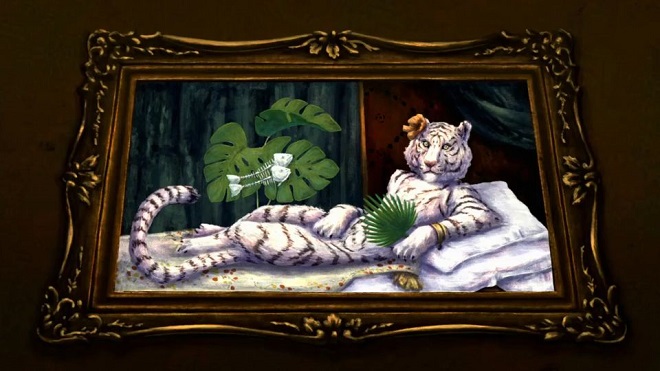
This shows up in the episode “The Cat’s Car”, technically making Infinity Train on topic for the Year of the Tiger.
Hopefully, at the very least, everyone who was vaccinated will get their booster shots. It’s a lost cause for too many people thanks to the number of vocal anti-vaxxers, but a good amount of people getting boosters with the same frequency as flu shots should help. Until next week.
Hopefully, at the very least, everyone who was vaccinated will get their booster shots. It’s a lost cause for too many people thanks to the number of vocal anti-vaxxers, but a good amount of people getting boosters with the same frequency as flu shots should help. Until next week.




